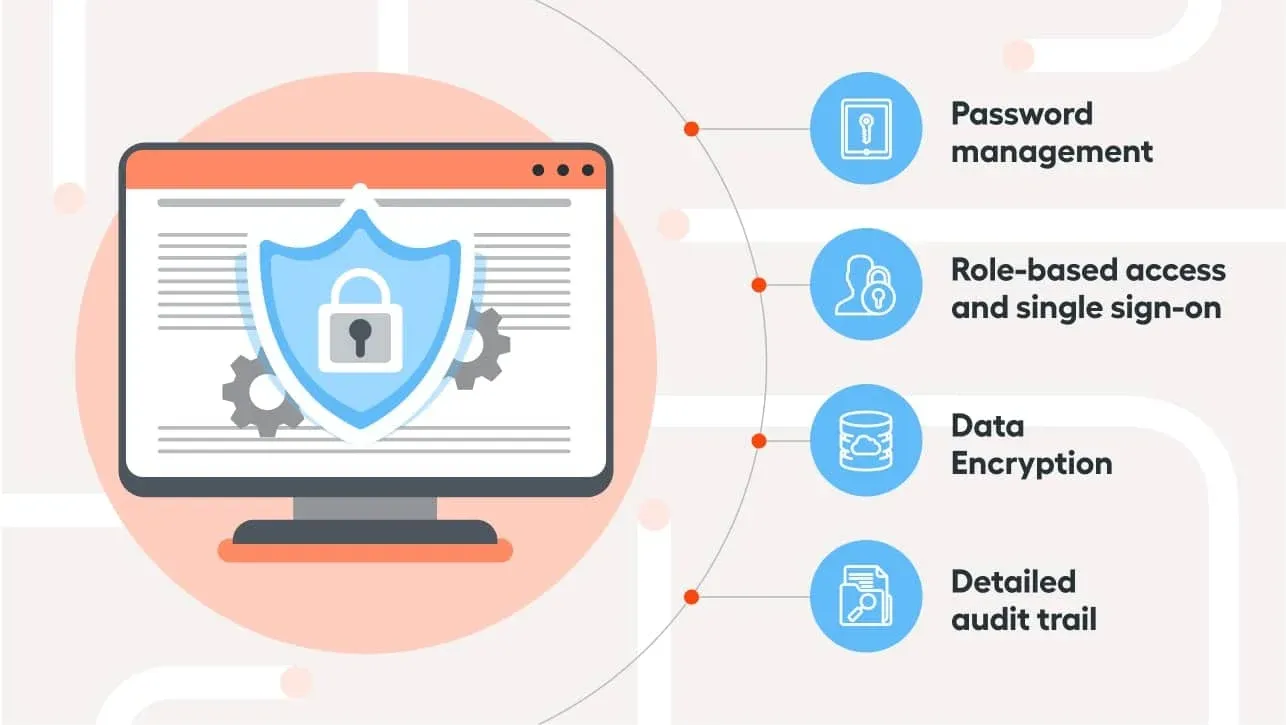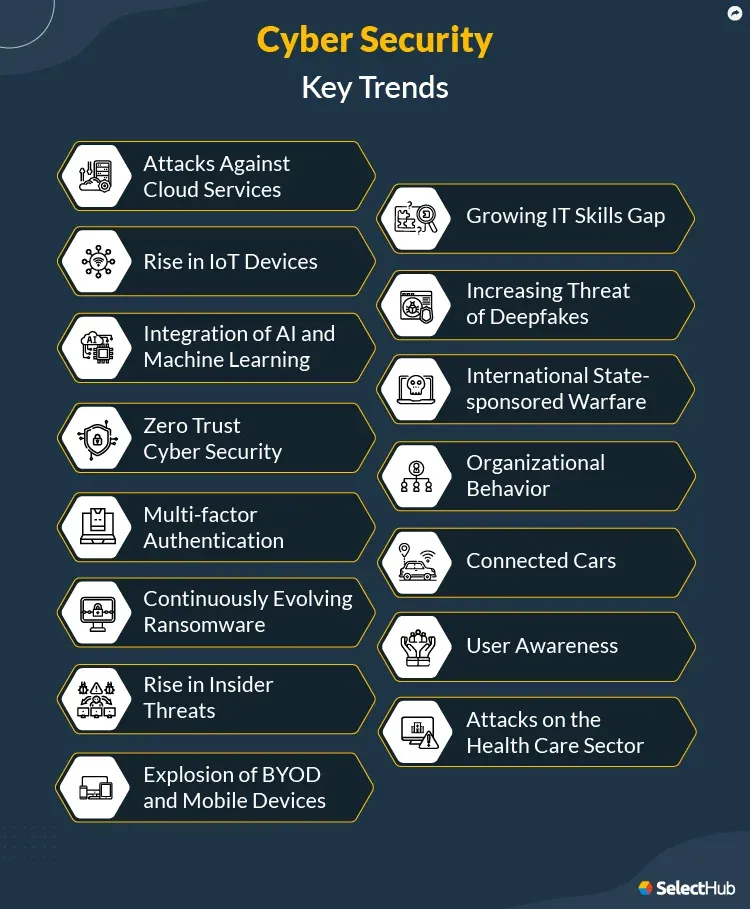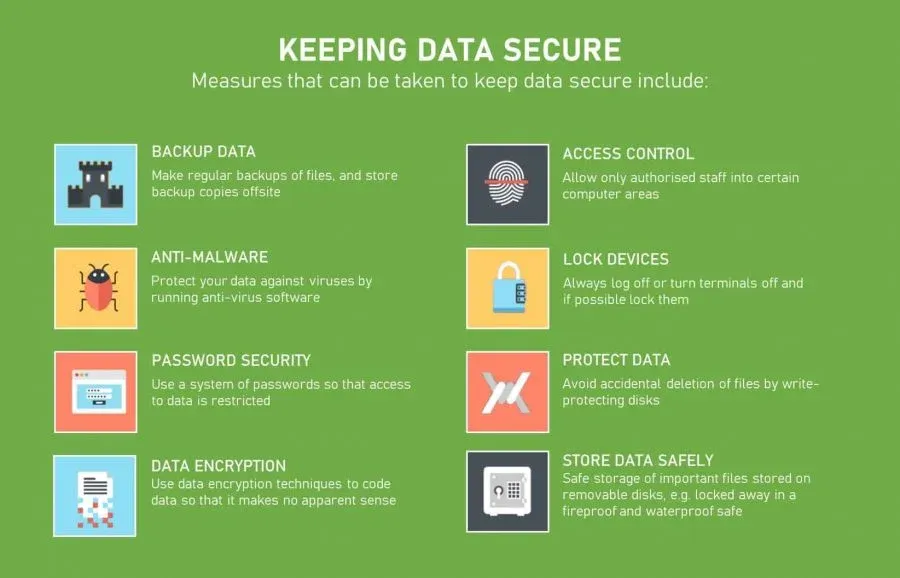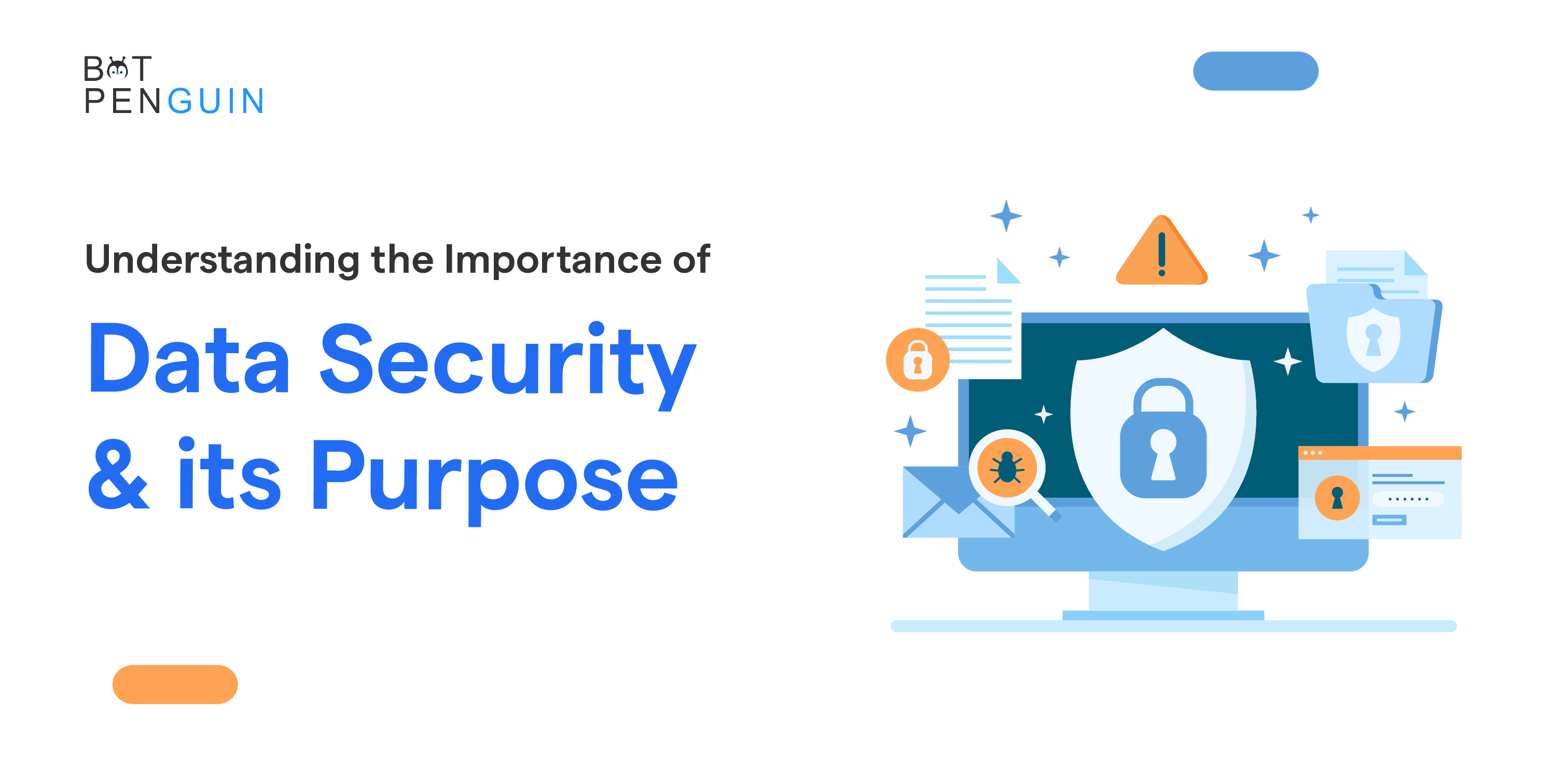Data, often called the new oil, fuels our modern world, driving innovation, commerce, and communication. As the Forbes report says, around 2.5 quintillion bytes worth of data are generated each day.
From personal messages to healthcare records, our reliance on data has never been more profound. However, data is not only sought after by legitimate users but also by cyber criminals.
Statista said data breaches exposed more than six million records worldwide in the first quarter of 2023. According to Verizon, phishing (22%), ransomware (18%), and cloud misconfigurations (15%) were the three most prevalent types of data breaches in 2023.
These statistics show Data security is not merely a technological concern. It is a fundamental necessity for safeguarding the integrity, confidentiality, and availability of information.
Cyber threats loom more extensive and more sophisticated than ever before. So, understanding the paramount importance of data security is not optional—it's imperative.
Continue reading this data security blog to learn about the importance of data security and its purpose.
What is Data Security?
Data security refers to the procedures and safeguards to guard against loss, corruption, and illegal access to data. It entails establishing and maintaining protections to guarantee data availability, confidentiality, and integrity.

Purpose of Data Security
Protecting sensitive data against unauthorized access, use, change, disclosure, or destruction is the goal of data security. Data availability, integrity, and secrecy are all improved. Additionally, it reduces the dangers and potential damages brought on by data breaches or illegal access.
Data security methods protect individual, financial, and corporate information, avoiding data loss, fraud, and other nefarious acts. Data security also enables businesses to adhere to legal and regulatory obligations to protect sensitive data.
Key Differences: Data Security vs. Data Privacy
The critical differences between Data security and data privacy are the following:
- Focus
Data security protects data from unauthorized access, breaches, and loss. On the other hand, data privacy focuses on protecting individuals' rights and ensuring responsible handling of personal information.
- Scope
Data security encompasses measures and techniques to secure all data types, including personal and non-personal data. Data privacy deals explicitly with protecting personal data and individuals' privacy rights.
- Approach
Data security employs technical measures and safeguards to protect data from unauthorized access or breaches. Data privacy involves legal and organizational measures to ensure compliance with privacy laws, obtain user consent, and handle personal data responsibly.
- Compliance
Data security aims to comply with various security standards and best practices to protect data. Data privacy requires compliance with privacy regulations and laws, such as the GDPR, which define how personal data should be collected, used, and protected.
Key Concepts of Data Security
Data security encompasses various concepts and areas of focus. Some key concepts include:
- Confidentiality
Confidentiality, a data security concept, involves ensuring that data is only accessible to authorized individuals or systems. It aims to prevent unauthorized disclosure or leakage of sensitive information.
- Integrity
Data integrity maintains data accuracy, consistency, and reliability throughout its lifecycle. It ensures that data is not tampered with or modified without proper authorization.
- Availability
Data availability in data security ensures that data is accessible and usable when needed. It involves implementing measures to prevent service disruptions and ensure timely access to data.
- Authentication and Authorization
Authentication and authorization are fundamental concepts in data security. Authentication means verifying the identity of users or systems before granting access. Meanwhile, authorization determines the level of access granted to authenticated entities.
Suggested Reading:
Types of Data Security
There are three types of data security, and they are:
- Encryption
Encryption employs an encryption algorithm to turn data into an unreadable format known as ciphertext. Decrypting the data using a decryption key ensures that people with the proper authorization can access and comprehend it.
- Data Erasure
Safely deleting data from storage devices to bar unauthorized access is known as data erasure. It is often accomplished by employing specialist software to erase all data traces or overwriting the data with random patterns.
- Data Masking
Data masking involves disguising sensitive data by replacing it with fictitious but realistic data. It is helpful for non-production environments or when sharing data with third parties while protecting the privacy of sensitive information.
- Data Resiliency
Data resiliency is the ability of data to withstand and recover from various types of threats. Such threats include hardware or software failures, natural disasters, or cyber-attacks. It includes implementing data backups, redundancy, and disaster recovery plans. Doing this ensures data availability and integrity.
These data security measures are often combined to provide a comprehensive approach to protecting data from unauthorized access, loss, or damage.
Importance of Data Security
Data security is crucial for several reasons:
- Personal Privacy Protection
Data security prevents illegal access to personal information. Such information includes names, addresses, social security numbers, and financial data.
When people exchange sensitive information, it is essential to safeguard their privacy and confidence.
- Prevention of Identity Theft
Data security measures aid in preventing identity theft, which is the fraudulent appropriation and misuse of another person's data.
Organizations can reduce identity theft risk for their clients and staff by protecting personal data.
- Safeguarding Intellectual Property
Data security from cyber threats is essential for businesses and individuals. It protects their intellectual property, including trade secrets, patents, copyrighted works, and private information.
Unauthorized access to sensitive information could lead to financial losses, a loss of competitive advantage, and reputational damage for the company.
- Compliance with Regulations
There are stringent rules governing the management and protection of data in several sectors, including finance, healthcare, and telecommunications.
Implementing robust data security measures ensures compliance with these regulations. It also assists in avoiding legal consequences, fines, and reputational damage.
- Business Continuity and Disaster Recovery
Planning for both disaster recovery and business continuity is directly related to data security.
Organizations can lessen the effects of data breaches, cyberattacks, natural catastrophes, or hardware failures on their operations by safely backing up data and implementing stringent security policies.
- Maintaining Customer Trust
Data breaches and illegal access to client information can diminish trust in a company.
Businesses can demonstrate their dedication to preserving client data by prioritizing data security. Doing this will enhance trust and loyalty among their customer base.
- Competitive Advantage
In today's digital age, data is a crucial resource. Organizations prioritizing data security get a competitive advantage by safeguarding their data's confidentiality, integrity, and availability.
As a result, it's possible to attract clients, investors, and business partners who value privacy and data security.
Risks of Inadequate Data Security
Data breaches can occur if proper security measures are not in place. Some risks of inadequate data security include:
- Unauthorized Access
Without sufficient security measures, unauthorized users can simply access data. Data misuse or theft as a result of this is possible.
- Malware Attacks
Systems that lack proper data protection may be more susceptible to malware attacks like viruses, ransomware, or spyware. Such attacks may lead to data loss, system outages, or monetary losses.
- Insider Threats
Inadequate security controls may allow internal users with malicious intent to access and misuse or steal sensitive data. It can be particularly damaging as insiders often have excellent knowledge and access to critical systems.
- Regulatory Non-compliance
Inadequate data security measures may lead to non-compliance with data protection rules.
These legislation include the Health Insurance Portability and Accountability Act (HIPAA) and the General Data Protection Regulation (GDPR). It could lead to legal implications, penalties, and reputational damage.
Consequences of Data Breaches
When data breaches occur due to inadequate security, there can be severe consequences for organizations and individuals involved. Some common consequences include:
- Financial Losses
Organizations and businesses may suffer significant financial losses due to data breaches. It may involve expenses for the investigation into the breach, legal costs, monetary penalties from the government, and compensation to the victims.
- Reputational Damage
A data leak can harm a company's reputation and destroy customer confidence. As a result, there may be a drop in consumer loyalty and trouble luring in new clients.
- Litigation and Legal Consequences
Data breaches can lead to legal actions filed by individuals or regulatory bodies. Organizations may face lawsuits from affected individuals seeking compensation for damages. Regulatory bodies may also impose fines and penalties for non-compliance.
- Identity Theft and Fraud
Cybercriminals can commit fraud and identity theft using sensitive personal information stolen in a data breach. For anybody impacted by the incident, this might have catastrophic repercussions.
- Operational Disruptions
Data breaches frequently disrupt normal operations because firms may need to invest substantial resources and time in remedial activities. It may lead to system outages, lost productivity, and higher expenses for restoring systems and recovering data.
Organizations must prioritize data security. They must implement robust security measures to mitigate these risks and protect sensitive information.

Data Security Measures
The measures of data security are the following.
- Implementing Strong Password Policies
Implementing strong password policies is a fundamental data security measure. It involves setting password requirements such as minimum length, complexity, and regular password updates.
Strong passwords help protect user accounts and prevent unauthorized access, particularly when combined with multi-factor authentication.
- Encryption and Data Privacy
Data is encrypted and put into an unreadable format to prevent illegal access. Doing this assures that even if data gets intercepted, it cannot be readily decoded without the encryption key.
Encrypting sensitive data helps to maintain data privacy and security. Especially when transmitting or storing data on external devices or in the cloud.
- Regular Software Updates and Patches
Data security depends on deploying security patches and updating software regularly. Software upgrades frequently include bug fixes, performance enhancements, and—most importantly—patches for discovered security flaws.
These upgrade guarantee systems have the most recent security features to reduce potential risks and help guard against known attacks.
- Access Control
Use secure authentication techniques, such as MFA (multi-factor authentication). Utilize the idea of least privilege when determining user roles and permissions.
Users should have only the access they require to do their tasks. Regularly review and update access permissions as roles change.
- Security Audits and Testing
Perform frequent security audits and vulnerability assessments to find gaps in your security infrastructure. Perform penetration testing to simulate attacks and assess the effectiveness of your security measures.
- Data Retention and Disposal
Define data retention policies and securely dispose of no longer needed data. Use secure deletion methods to ensure data can quickly recover from storage devices.
- Firewalls and Intrusion Detection/Prevention Systems (IDS/IPS)
Use firewalls to manage incoming and outgoing network traffic. Employ IDS/IPS to monitor and respond to suspicious network activity.
- Data Backups
Regularly back up critical data and ensure backups are stored securely, ideally off-site or in the cloud. Follow the test backup and recovery protocols to ensure data restoration when needed.
- Security Patch Management
Keep operating systems and programs updated with all software's most recent security updates. To ensure timely updates, implement a patch management mechanism.

Best Practices for Data Security
To have the best data security, follow these practices.
Employee Training and Awareness
One of the most critical data security practices is providing employees with regular training and awareness programs. It helps educate them about the importance of data security, common security threats, and best practices for handling sensitive information.
Through security awareness, organizations can empower employees to protect data proactively and identify potential vulnerabilities or suspicious activities.
Network Segmentation and Access Controls
Network segmentation involves dividing a computer network into smaller, isolated subnetworks.
Organizations can enforce strict controls on who has access to specific data or systems by implementing network segmentation and access controls.
It reduces the risk of unauthorized access lateral movement by attackers. With that, it also limits the potential damage caused by a breach.
Develop an Incident Response Plan
Make a thorough incident response strategy describing what to do during a security or data breach. Assign roles and duties for incident response and recovery to guarantee a coordinated and effective response.
Regular Data Backups and Disaster Recovery Plans
Regularly backing up data and having a comprehensive disaster recovery plan are essential. It would protect against data loss and minimize downtime during system failures, natural disasters, or cyberattacks.
Data backups need to be stored securely and tested periodically to ensure reliability. A well-designed disaster recovery plan enables swift data recovery, minimizing the impact on business operations.
Monitor and Audit
Implement robust monitoring and logging systems to track and analyze system and network activities. Set up alerts for suspicious activities.
Review and audit access logs and security events to detect and respond to threats.
Encrypt Data
Encrypt data both in transit and at rest. Use encryption algorithms like AES (Advanced Encryption Standard) to protect data stored on servers, databases, and storage devices.
Employ encryption protocols (e.g., TLS/SSL) for secure data transmission over networks.
Data Security Future Trends
The future trends in data security are as follows:
AI-powered security
Businesses are adopting artificial intelligence (AI) to enhance their data security as cyber threats evolve.
AI-powered security systems analyze vast amounts of data and detect patterns and anomalies. It can also identify potential threats and respond quickly to mitigate risks.
AI can also help identify and patch real-time vulnerabilities, preventing potential breaches.
Zero trust architecture
With increasing data breaches, organizations are shifting towards a zero-trust architecture model.
In a zero-trust environment, access to data and resources is restricted and continuously verified. It continues to happen regardless of whether the access comes from inside or outside the organization's network.
This approach minimizes the threat of unauthorized access. It also reduces the impact of potential data breaches.
Blockchain technology
Blockchain is gaining popularity in data security due to its decentralized and tamper-resistant nature. Blockchain can ensure the integrity and confidentiality of data by providing a secure and immutable record of transactions.
It can secure sensitive data, such as personal information and financial records, by eliminating the need for centralized authorities or intermediaries.
Multi-factor authentication (MFA)
Traditional username and password authentication methods are no longer sufficient to protect data in today's digital landscape.
By requesting various forms of identity from users, multi-factor authentication (MFA) gives an additional layer of protection. It consists of a security code provided to their mobile device, a password, or a fingerprint scan.
As a result of requiring the compromise of numerous factors, MFA considerably lowers the danger of unauthorized access to sensitive information.
Data encryption and homomorphic encryption
Encryption is a tried and tested method of securing data. As data breaches become more sophisticated, organizations focus on implementing more robust encryption algorithms to protect their data.
Homomorphic encryption is an emerging technique that allows computation on encrypted data without decrypting it. It enables secure data processing and analysis, even when stored or processed in untrusted environments.
Cloud security and data residency
As more organizations adopt cloud computing, ensuring the security of data stored in the cloud is becoming paramount. Future trends in cloud security include improved security protocols, encryption, and stricter access controls.
Additionally, data residency laws and regulations are evolving to ensure that organizations have control over the location and storage of their data. Doing this protects it from unauthorized access and potential legal issues.
Data privacy and compliance
With the introduction of regulations like the California Consumer Privacy Act (CCPA) and the General Data Protection Regulation (GDPR), data privacy and compliance have become essential aspects of data security.
Future trends involve organizations prioritizing data privacy, implementing privacy-by-design principles, and ensuring compliance with relevant regulations. It includes obtaining explicit consent for data collection and processing, providing transparency regarding data usage, and giving individuals control over their personal information.
Overall, future trends in data security involve leveraging advanced technologies like AI and blockchain and implementing stricter access controls and encryption methods. It proactively addresses data privacy and compliance requirements and continuously evolving security measures to keep pace with evolving cyber threats.
Conclusion
Data security has become a vital aspect of daily business operations. According to Cybersecurity Ventures, the worldwide cost of cyber threats and crime will reach $10.5 trillion annually by 2025.
Data security is a continuous process that requires a proactive approach and continual monitoring. Data security serves as the guardian of our information, ensuring that sensitive data remains confidential, integral, and available only to those authorized to access it.
Data security's significance cannot be overstated in a world where data breaches and cyberattacks have become commonplace. Cyberattacks cause immeasurable harm to individuals, organizations, and even nations.
As technology evolves, cybersecurity risks and threats also evolve. Verizon Data Breach Investigations Report 2023 shows ransomware attacks also rose by 13% in 2022.
Implementing an efficient, effective, and comprehensive data security strategy can help protect against security incidents. It will also minimize the impact of security breaches and enable swift recovery.
Businesses must understand the importance of data security and take proactive steps to safeguard sensitive information and protect their digital assets.
By recognizing the significance of data security and its overarching purpose, we can protect our most valuable asset: data.
Frequently Asked Questions (FAQs)
What types of data should be secured?
Data types should be secured, including personal information, financial records, customer data, intellectual property, and any other confidential or sensitive information that may be valuable to individuals or organizations.
What is the purpose of data classification?
Data classification is essential to categorize data into different levels of sensitivity and importance. It helps organizations prioritize their efforts to implement appropriate security measures based on the value and criticality of the protected data.
How can individuals contribute to data security?
Individuals can contribute to data security by using strong and unique passwords, being cautious with sharing personal information online, regularly updating software and devices, and being aware of phishing scams or other suspicious activities.
What are the legal obligations for data security?
Depending on the country and industry, specific legal obligations for data security may exist, including compliance with data protection laws, privacy regulations, and industry standards. Organizations must ensure they meet these obligations to protect data.
How can encryption help with data security?
Encryption is a method of converting data into a format that unauthorized users cannot easily understand. It adds a layer of protection to sensitive information, making it unreadable unless decrypted with the proper key.
What is the role of employee training in data security?
Training employees for data security is crucial. By educating them about potential threats, how to recognize phishing attempts and the importance of strong passwords, organizations can empower their employees to be the first line of defense against data breaches.



